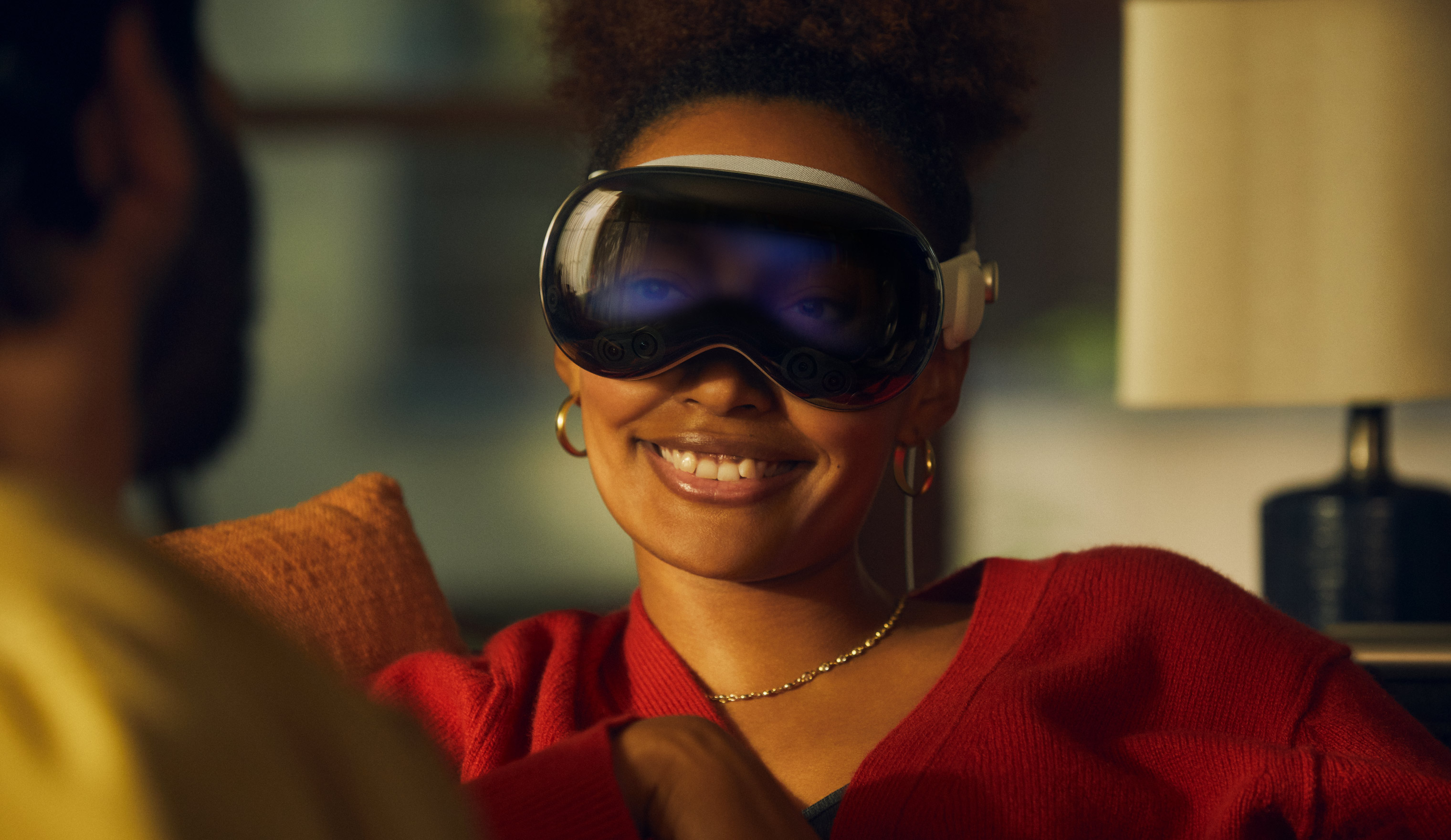The early returns are in – the Apple Vision Pro is out and is getting very positive reviews. But digging deeper, is it really worth the hype? Is it worth $3500? What about business use cases?
Is the Apple Vision Pro worth the hype?
In a word, yes. Having experienced the Apple Vision Pro first-hand, I can confidently say it is a ground-breaking device. There are comprehensive reviews all over the internet, so I’ll just focus on the two most important keys to making the experience work -- the passthrough capability and the user interface – then explain the use cases in the enterprise.
Viewing content is a joyful experience, whether working on a virtual computer screen, watching a 3D movie, or simply scrolling websites. In fact, it might be the best way to experience a movie, with some reviewers saying it is better than being in an IMAX theater. I found myself gasping at the content in the 3D demo. The displays are remarkable, head and shoulders above any consumer device on the market.
But where the displays and accompanying camera and sensor technology really shine is in the passthrough capability.
While you will never hear Apple use these words, the Apple Vision Pro is essentially a virtual reality device: It blocks out the real world and replaces it with a digital experience. Apple offers augmented and mixed reality experiences by using cameras and sensors on the device that can recreate a spatially aware view of what the device is facing. The quality is so good that it allows users to add digital content to their real world without cutting them off from the real world around them. However, if users want to cut out the real world, they can by simply rotating the crown.
The other thing that Apple nailed is the user interface. The headset does not come with hand controllers like most headsets but uses eye tracking and finger gestures to navigate the UI. This works surprisingly well and is so intuitive that it only takes a few minutes to learn.
All in all, it is a pretty incredible device that checks a lot of boxes. Getting so much right in version 1.0 is impressive and leads to optimism for the future.
Is this just a consumer device? What about business use?
The answer to the first question is, yes, it is a consumer device the same way the iPhone is a consumer device. It's a device consumers will love that can be easily adapted for business use.
As for business use, let's break down the device's core functions and investigate how they could be used for business tasks.
The Apple Vision Pro As a Virtual Workspace
One of the key features of the Apple Vision Pro is the ability to create a virtual workspace.
The first involves creating a virtual monitor connected to your Mac. When you put the headset on and are near a Mac, it will ask if you would like to connect. When you connect, you will see a virtual monitor in your view that can be moved or resized to suit your needs. The resolution is excellent and would allow a road warrior to shift from a 13-inch screen to a 50-inch screen or bigger, all with complete privacy and available anywhere.
The second method does not require a Mac present and works by pulling up apps natively in the device. So you could simply pull up an Excel document on a screen and work just as normal. The only thing you might want is a Bluetooth keyboard for extended typing. The device also allows you to multitask, having several apps open at the same time, which can all be sized positioned wherever you want.
The Meta Quest 3 also has most of this functionality, though not quite as seamless. And the display quality and UI of the Quest 3 isn't quite good enough, in my opinion, for working for long periods of time.
I could see this replacing my laptop on business trips, offering incredible entertainment and productivity in a single device.
The Apple Vision Pro As a VR Device
But what about the Apple Vision Pro as a VR device? I've written extensively about the power of VR, especially in the context of collaboration. The ability to meet with other people in a shared space with an immersive shared experience can be very powerful. And this is an area where Apple still has some work to do.
For me, the real power of VR is its support for social experiences. While experiencing content in an immersive space is cool, it goes to another level when you can experience it with others. This is where the Apple Vision Pro falls short: for the most part, the device is a solo experience. The one exception is Facetime, where users can join Facetime groups with the headset on. The user creates a "persona," which is an avatar view of the individual based on scans of their face. When they join a Facetime call, other users see this persona avatar, which mimics their face and hand movements and is synced with their voice. These are not 3D avatars that can move about the space, as they are anchored in Facetime windows in the view.
Beyond questions about the creepiness of the almost lifelike personas, this isn't the same experience as having real avatars that can move around a space and mingle in a group setting. It solves the problem of "How do I join a video call when wearing a headset?" but doesn't provide the 3D collaboration experience that other VR headsets do.
One of the most significant advantages to collaborating in VR is the ability to gather in a group and mingle. VR users can direct their avatars to individuals or groups for conversation, just as they would in real life. This ability to control who you interact with, along with the immersive feeling of being in the same place as others in the meeting, provides an overall experience that can’t be replicated in non-VR solutions.
Again, Apple has gone way out of its way to avoid the words metaverse and virtual reality. They talk about spatial computing and have pivoted towards creating something new. But all of this could be addressed with the right apps being developed. So, while Facetime might be a relatively 2D experience, Microsoft Mesh, Engage, or other VR collaboration applications could be developed to provide this functionality.
So, is the Apple Vision Pro ready for business VR use? Not today, but VR collaboration could be coming soon.
Apple Vision Pro as an Augmented Reality Device for Business
As previously mentioned, the passthrough capability is high enough quality to support AR for business use. All of the usual applications we talk about with AR should be in play -- remote technicians, training, guided instructions, AI-enabled quality assurance –.
One of the more intriguing features of the Apple Vision Pro is the ability to record and view 3D content. This could allow for richer and more textured training and remote support experience.
While there are still some use cases for traditional AR, that is AR that uses transparent lenses with digitally superimposed content, the quality, field of view, and flexibility of the passthrough technology of the Vision Pro should propel Apple as a leader in AR.
But we aren't there yet. What the device is capable of and what apps have been built for AR are different stories.
This device is partially targeted at developers to get devices and toolkits in their hands to build the next generation of spatial computing apps. This is a brand-new device with a new OS and platform, and it will take time to see the real value in the business world.
Is it worth $3,500? For developers, enthusiasts, and road warriors with some extra cash and already invested in the Apple ecosystem, yes. For the rest of the world, it’s probably best to wait for more collaboration and AR applications. And a lower price tag.
This post is written on behalf of BCStrategies, an industry resource for enterprises, vendors, system integrators, and anyone interested in the growing business communications arena. A supplier of objective information on business communications, BCStrategies is supported by an alliance of leading communication industry advisors, analysts, and consultants who have worked in the various segments of the dynamic business communications market.









